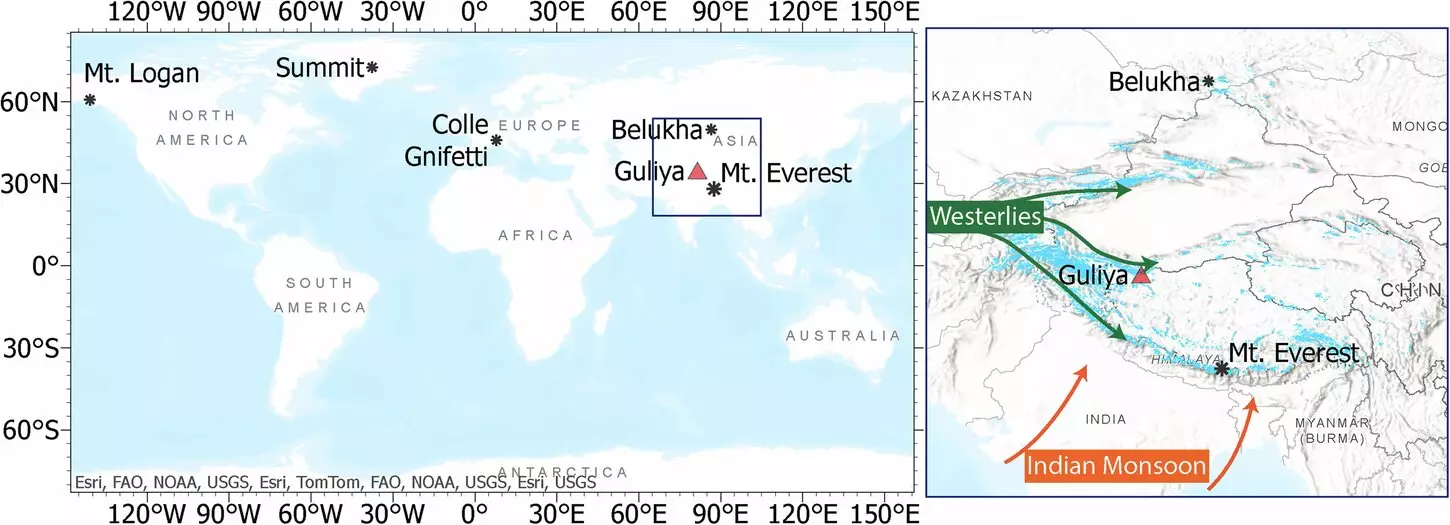A recent groundbreaking study conducted by an international research team, notably including Texas A&M University’s Dr. Franco Marcantonio, has shed light on an alarming environmental issue: the infiltration of lead into the pristine remote areas of the Tibetan Plateau. The research, entitled “Source of lead in a Tibetan glacier since the Stone Age” and published in *Communications Earth & Environment*, highlights how even the farthest corners of the globe are not immune to human-induced contamination. This once-thought untouched bastion of nature is now revealing the extent of anthropogenic influences that have reached as high as the “Roof of the World.”
Situated predominantly in southwestern China, the Tibetan Plateau stretches across an area four times the size of Texas, often serving as a critical environmental barometer due to its elevation and unique atmospheric conditions. Through meticulous examination of the Guliya Ice Cap, a crucial glacial section within this plateau, the team found that lead contamination began to surge dramatically in 1974, peaking during the years 2000 to 2007. This period corresponds with rapid industrial growth and increased vehicular emissions in China, particularly from leaded gasoline—a stark reminder of how localized practices can impact even the most distant ecosystems.
Utilizing sophisticated techniques from Texas A&M’s Williams Radiogenic Isotope Facility, the research team pinpointed the principal source of lead pollution to combustion emissions from leaded fuels. Despite the general perception that the problems of industrial pollution are confined to urban areas, this study underscores how toxic emissions can disseminate across vast landscapes through atmospheric currents. Dr. Marcantonio’s expertise in geochemistry played a vital role, allowing the research team to analyze the isotope ratios of lead across various layers of ice, some dating back as far as 36,000 years.
This multi-millennial ice core analysis acts as an environmental time capsule, offering critical insight into the trajectory of lead pollution from pre-industrial times to the contemporary era. By comparing lead isotope data from different epochs, researchers gained a clearer picture of the temporal shifts in lead deposition attributable to human activity—an essential aspect of understanding how pollution has evolved over time.
The implications of this research extend beyond the scientific community, posing profound risks for both wildlife and human health. Lead is a verified neurotoxin, known for its insidious effects on cognitive functions. The findings bring to light the concerning reality that some of the world’s remotest environments are bearing the brunt of urbanized pollution. As Dr. Marcantonio noted, the airborne pollutants that settle in these alpine environments symbolize the far-reaching consequences of human industrial practices, reflecting a disturbing trend of ecological degradation.
The investigation serves as an urgent wake-up call regarding the sustainability of our ecosystems. Understanding how contaminants like lead traverse through different environments, including aquatic systems and living organisms, becomes paramount in addressing potential long-term health crises and ecological devastation. Efforts to mitigate lead exposure globally must now take into account these hidden pathways of pollution propagation.
While the team has made significant strides in tracing lead contamination in glaciers, Dr. Marcantonio emphasizes that this study is merely a starting point. Future research will continue to explore the dynamics of lead movement across various environmental matrices, from oceanic systems to biological organisms. The urgency of this research becomes increasingly clear in light of the potential ramifications for public health and biodiversity.
As we forge ahead in a changing environmental landscape, the findings of this study confront us with an essential truth: being remote does not equate to being untouched. The ripple effects of human actions can penetrate even the most secluded regions of our planet. This underscores the need for global awareness and actionable strategies to combat pollution and protect our shared environment—because in the end, every action we take reverberates far beyond our immediate surroundings.


Leave a Reply